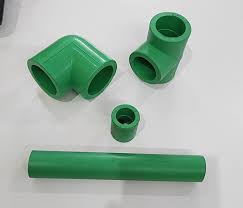Dec . 25, 2024 19:00 Back to list
hdpe pipe dimensions factories
Understanding HDPE Pipe Dimensions and Their Applications
High-Density Polyethylene (HDPE) pipes are widely utilized in various industries due to their durability, chemical resistance, and lightweight properties. The versatility of HDPE pipes makes them an ideal choice for water supply, sewage treatment, and irrigation systems. In this article, we will delve into HDPE pipe dimensions, their standards, manufacturing processes, and their importance in various applications.
What are HDPE Pipes?
HDPE pipes are made from high-density polyethylene, a form of plastic that offers excellent strength-to-density ratio. These pipes are known for their high tensile strength and low weight, making them easier to handle and install. HDPE is also resistant to corrosion, impact, and ultraviolet radiation, contributing to the longevity of the pipes. The pipes are available in various dimensions to suit different applications, and understanding these dimensions is crucial for selecting the appropriate pipe for a particular project.
Standard Dimensions of HDPE Pipes
HDPE pipes come in a range of diameters and wall thicknesses, which are standardized to ensure compatibility across different systems. The most common standards for HDPE pipes are established by the American Society for Testing and Materials (ASTM) and the American Water Works Association (AWWA).
1. Diameter HDPE pipes are available in various nominal diameters, usually ranging from 16 mm to 1,200 mm (about 0.63 inches to 47 inches). The diameter chosen will depend on the volume of fluid being transported and the pressure requirements of the system.
2. Wall Thickness The wall thickness of HDPE pipes is crucial for determining the pipe's pressure rating. The most commonly used standards for wall thickness are the SDR (Standard Dimension Ratio) and the DR (Dimension Ratio). SDR is the ratio of the pipe’s diameter to its wall thickness. For example, an SDR of 11 indicates that for a pipe with a diameter of 110 mm, the wall thickness is 10 mm. Lower SDR values indicate thicker walls and thus higher pressure ratings.
3. Length HDPE pipes are typically supplied in lengths of 6 to 12 meters (approximately 20 to 40 feet), although longer sections can be manufactured upon request. Continuous lengths of pipe are particularly advantageous in reducing the number of joints during installation, minimizing the potential for leaks.
Manufacturing Processes of HDPE Pipes
The production of HDPE pipes involves several steps to ensure they meet the required standards for quality and performance
. The primary manufacturing processes includehdpe pipe dimensions factories

1. Extrusion This is the most common method for producing HDPE pipes. In the extrusion process, HDPE granules are melted and forced through a die to form a continuous pipe. The pipe is then cooled and cut to the desired length.
2. Fusion HDPE pipes can be joined using a technique called fusion welding, which involves melting the pipe ends and pressing them together to create a strong joint. This method is popular due to its ability to create a continuous system with minimal leakage points.
3. Testing Quality control is essential during the manufacturing process. HDPE pipes undergo various tests to ensure they meet industry standards for pressure rating, flexibility, and resistance to environmental stress.
Applications of HDPE Pipes
HDPE pipes find applications in numerous sectors, including
1. Water Supply These pipes are commonly used for potable water supply systems due to their resistance to corrosion and scale buildup.
2. Sewerage and Drainage In wastewater management, HDPE pipes are favored for their ability to withstand harsh chemicals and external environmental factors.
3. Irrigation Systems Farmers and agricultural businesses use HDPE pipes for irrigation systems due to their lightweight nature and ease of installation.
4. Industrial Applications Industries often utilize HDPE pipes for transporting chemicals, gas, and other materials due to their high strength and resistance to various substances.
Conclusion
In conclusion, HDPE pipes are an essential component in modern infrastructure systems. Understanding their dimensions, manufacturing processes, and applications is crucial for engineers, contractors, and different industries in selecting the right pipes for their needs. With their superior performance and versatility, HDPE pipes will continue to play a vital role in water distribution, drainage, and various industrial applications for many years to come.
-
High-Quality PVC Borehole Pipes Durable & Versatile Pipe Solutions
NewsJul.08,2025
-
High-Quality PVC Perforated Pipes for Efficient Drainage Leading Manufacturers & Factories
NewsJul.08,2025
-
High-Quality PVC Borehole Pipes Durable Pipe Solutions by Leading Manufacturer
NewsJul.08,2025
-
High-Quality PVC Borehole Pipes Reliable PVC Pipe Manufacturer Solutions
NewsJul.07,2025
-
High-Quality UPVC Drain Pipes Durable HDPE & Drain Pipe Solutions
NewsJul.07,2025
-
High-Quality Conduit Pipes & HDPE Conduit Fittings Manufacturer Reliable Factory Supply
NewsJul.06,2025

